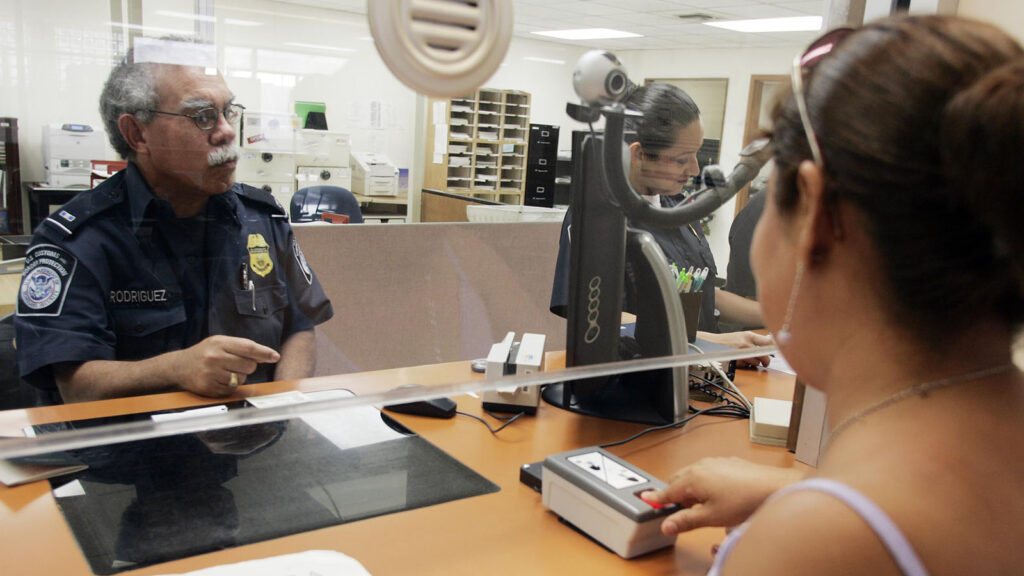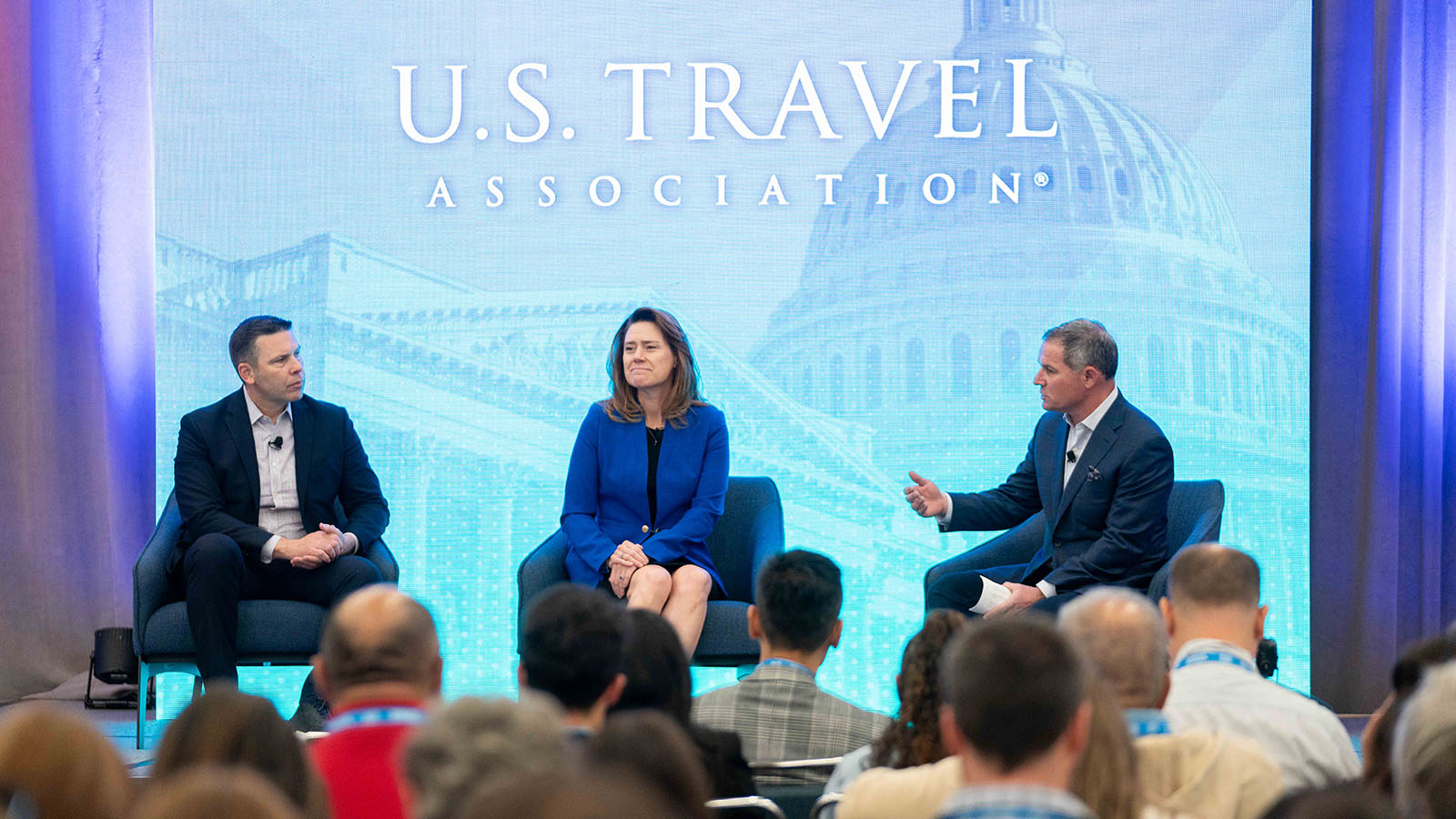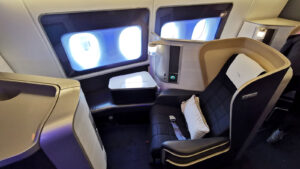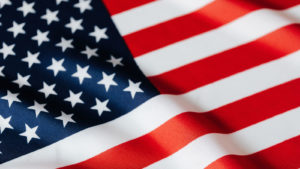USA looks to streamline border processing
New technology could also get you through airport security in 'six seconds or less'.

What we'll be covering
As travel to the United States surges back to pre-pandemic levels and beyond, queues at the US border continue to lengthen. Occasionally, visitors can get lucky – my last pass through LAX fortuitously took a mere 60 seconds. But long lines have become the norm. For instance, sometimes almost three hours at New York JFK: even for those visitors already granted a full US visa.
For a country soon to host a raft of global events, something clearly needs to be done. And with Australians still eagerly awaiting access to Global Entry – a trial for which was due to start five years ago, yet still hasn’t begun – a solution is begging. Fortunately, though, it’s not just us Aussies who want to see improvements at the US border.
The US Travel Association – a national non-profit that represents every element of America’s travel industry – now has a remit to focus on exactly this. That’s through the Commission on Seamless and Secure Travel. It bands together experts from right across the spectrum to work towards change.
The Commission includes members who’ve served with US Customs & Border Protection (CBP), the Department of Homeland Security (DHS) and the Transportation Security Administration (TSA). It also includes members who’ve worked with the National Security Agency (NSA), the Federal Aviation Administration (FAA), the former CEO of Heathrow Airport and even the former American Ambassador to Australia.
Two of the Commission’s members and the US Travel boss share the group’s priorities at the invitation-only IPW 2024 conference in Los Angeles. These are:
- Geoff Freeman, President and CEO, US Travel Association.
- Kevin McAleenan, Chair of the Commission on Seamless and Secure Travel. Former Acting Secretary, DHS. Former Commissioner, US CBP.
- Patty Cogswell, Commission Member. Former Deputy Administrator, TSA.

Making US border screening more efficient for transit travellers
‘There’s nothing more predictable than when planes land,’ Freeman recognises. ‘We’ve got the World Cup in two years, we’ve got the Olympics two years after that. We’ve got our 250th birthday in two years; we’ve got 70 million travellers who want to come every year.’ It’s clear the US needs better processes to handle such volumes of visitors.
Many travellers also connect onwards from their point of entry. Right now, that means waiting around baggage claim, only to collect their bag and drop it off around the corner. Naturally, this requires clearing security again, too.
‘It is a massive inconvenience for travellers to go through Customs, collect their bags, and then have to go rescreen their bags at the TSA checkpoint to make their connection,’ says Freeman. ‘Not having to go back through TSA, what a gift that would be if people don’t need to meet with officers.’
‘That doesn’t happen at most of our global competitive (airports),’ McAleenan jumps in. Passengers are ‘able to land at the main gateway and then get to their destination without a re-screening.’
No doubt, any future change in this space is going to be heavily influenced by where a traveller is landing. Those from international airports known to have the highest standards of screening present a lower risk than travellers from other locations. But as far as checked bags go, AI could play a big role in achieving big leaps forward.
Imagine transferring international bags ‘tail to tail out of the tarmac,’ McAleenan ponders. ‘If we can take an image of a bag, have an AI algorithm evaluate that bag for whether it violates any border mission or an aviation security mission and allow that bag to move smoothly … that’s going to be a huge advantage for travellers.’
Facial recognition can mean fewer interviews at the US border
Facial recognition is currently a touchy subject in the United States. Some members of the US Congress are seeking to limit its use in airports over privacy concerns. But McAleenan believes that ‘with the right protections, with the right oversight, you can absolutely protect privacy.’
‘You can ensure that biometrics are implemented without bias based on different ethnicities or countries of origin,’ he adds. US CBP should be ‘ready to make a leap and not have to talk face-to-face with every arriving traveller.’
Facial recognition ‘is significantly more accurate than a human looking at a physical ID,’ adds Cogswell. ‘It automatically aligns with your travel record. It gives you, the passenger, the ability to control your own destiny. To walk through a different way, rather than handing back and forth pieces of paper.’
To those concerned with system failure, Cogswell also has a comeback. ‘If you don’t match, we just go back to the normal process that we have today where you talk to a person and show a document.’
Clearly, those advocating for faster processing at the US border need a technological solution to make that happen. The Commission on Seamless and Secure Travel believes that facial recognition will play a pivotal part.
Facial recognition ‘is a more secure methodology than having a human being look at a … document and then (checking) against the face,’ says McAleenan. ‘It is both more facilitative and more secure at the same time.’
In fact, facial recognition is already in use at the US border. I’ve personally noticed that my passport rarely gets scanned or even opened on arrival in the US because the computer has already matched my face to my identity and travel history. Today, CBP calls that ‘Simplified Arrival’. In future, full automation could speed things up even further.
Security screening could also be more efficient
There’s a lot that automation can do beyond the US border – such as assisting with passenger security screening. Freeman shares that earlier this month, ‘We were in Atlanta with TSA leaders to look at new technology.’ It’s so efficient that if implemented, it ‘can speed people through the TSA checkpoint in six seconds or less.’ Details are not yet public, although TSA has already been rolling out fast-track ID verification for some eligible PreCheck flyers.
‘Similarly, with some of the artificial intelligence applications, we’re looking at images of bags,’ McAleenan adds. This could allow baggage screening to not only be faster, but also more accurate. Automated screening could find threats ‘more comprehensively than a human being can.’
‘TSA is testing these capabilities,’ McAleenan says of ‘automated artificial intelligence technologies in aviation security … but it’s still working on how they will be adopted and overseen and improved.’
‘I’m cautiously optimistic that leaders in our country are waking up to the challenge,’ Freeman says of improving travel’s pain points more broadly. He’s also just returned from a visit to The White House and meetings with the President’s Chief of Staff, National Security Advisor and Secretary of Transportation. He hopes that the administration will recognise ‘the need for the US to do what it needs to do to attract travellers.’
As for rolling out Global Entry to Australian citizens, and by extension, TSA PreCheck? We’ll just have to keep patiently waiting.
Read more: Australians are no closer to enjoying US Global Entry
Featured image courtesy of US CBP. Chris Chamberlin attended IPW 2024 in Los Angeles as a guest of US Travel Association.
Stay up to date with the latest news, reviews and guides by subscribing to Point Hacks’ email newsletter.






Community